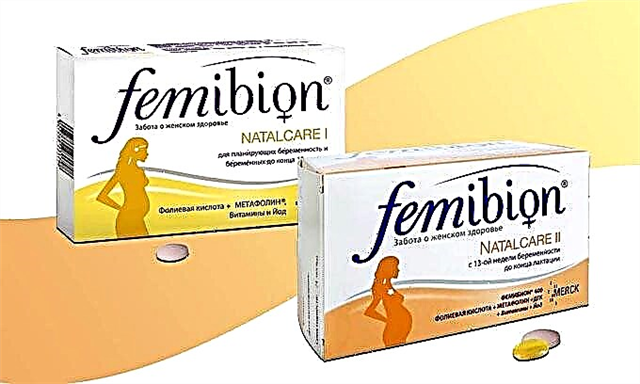It is very important to provide children with healthy food. Forming a menu for complementary foods, many mothers are interested in the age at which a child can be given tea, juice, compote, herbal infusion. Fluids that replace breast milk and water have different effects on the fragile body. It is important to choose the right composition and enlist the best recipes for preparing a drink for a six-month-old child and older children.

The child drinks tea on his own
The benefits of tea for child nutrition
Quality leaf tea is good for the child's body. The drink contains balanced vitamin and mineral complexes that improve the immunity of the child, provide immunomodulating, antiviral effects.
Green varieties are known for their high content of antioxidants, which cleanse the body of allergens and toxins. Herbal infusions normalize the functioning of the nervous system, stabilize the digestive processes.
Nutritional value
Tea contains 300 substances, 260 of them are recognized during physical and chemical research. The soluble elements are tannins, esters, alkaloids, amino acids, pigments and vitamins. Insoluble and partially soluble inclusions are represented by protein, mineral, pectin and resinous additives, carbohydrates and enzymes. The average calorie content of the drink is 140.9 kcal (serving size - 100 g), protein content - 20 g, fat - 5.1 g, carbohydrates - 4 g.
Important! Among the resinous elements, a special place in tea is occupied by alcohols, resin acids, phenols, and other organic compounds that give the drink a special taste and aroma.
How to choose the right one
The choice of a tea drink for children is based on the amount of caffeine in various varieties: hibiscus - 60 ... 120 mg in one cup, black tea - 40 ... 70 mg, white, green tea - 5 mg.
Important! White and green teas ferment poorly, leaving many substances that can slow down the digestive process when used regularly. Pediatricians recommend giving children black and herbal tea drinks.
Among the varieties of black tea, it is worth opting for options that contain a small amount of caffeine. Parents can give the child a drink 1-2 times a day, excluding evening tea, then the baby will sleep well. Tea for crumbs should be weak in strength. Children are brewed a drink in a separate bowl: for 0.5 g of a tea leaf - 300 ml of water. The infusion is served warm, not hot. A slice of lemon or mint will give a pleasant aroma and taste. Tea contains no calories and is often the staple drink of overweight children.

The main components of the tea leaf
Is it possible for a child under one year old to have regular tea with sugar
Nutritionists forbid adding sugar to a child's tea. If the crumb refuses to drink an unleavened drink, it is worth looking at alternatives to sugar. In the absence of allergies, you should drink a drink with honey. The leaves of raspberries, currants, strawberries in infusion, slices of apples or pieces of fresh berries will provide a wonderful aroma and enrich the taste.
Varieties of baby teas
For babies, a special line of tea has been developed, corresponding to age categories. Many drinks are allowed to be introduced into the children's diet during lactation - correctly selected infusions normalize the activity of the digestive tract, improve sleep, and increase immunity.
The varieties of baby tea shown for consumption by children are conventionally divided into two groups:
- Packaged herbs are prescribed by pediatricians for treatment and prevention. The formulations are conventional one-component and include several medicinal plants.
- Instant granular products contain herbal extracts supplemented with natural dried fruits, sugar and citric acid. The formulations dissolve easily in warm drinking water and are suitable for infants with a strengthened body. Although such drugs can cause allergies in infants under 1 year old.
Note! Manufacturers of baby food must indicate on the packaging the composition of the product, recommendations for use, from how many months the selected tea can be given to the child. Older children will like more concentrated drinks. Strongly diluted tea is suitable for babies.
From how many months to give tea to a child
For infants under six months of age, doctors recommend giving only milk. From four months, babies are allowed to offer baby teas that exclude the content of caffeine or tannins that reduce appetite. Special products are safe for babies, have a pleasant taste and useful properties: soothing, normalizing the functioning of the stomach, liver and kidneys.
From six months, children are given useful herbal infusions: from chamomile, fennel, mint, lemon balm. After a year, when you can give your baby black tea, the use of leafy varieties of alpine plants is allowed.

Herbal tea in the baby's diet
How to make baby tea correctly
Kids are shown herbal teas for children. The concentration of the drink should be age appropriate.
Important aspects:
- Water will need filtered first boil. Before brewing green, yellow, white tea, the liquid after boiling cools down to 75-80 degrees.
- The brewing container should be preheated with boiling water.
- Drink tea after cooling completely.
The drink reveals its taste as much as possible, benefits the body, subject to the above conditions.
Chamomile
Chamomile flowers contain trace elements and vitamins that ensure the normal functioning of the digestive, circulatory, nervous, and immune systems. The infusion of the flower reduces nervous tension in children, helps to overcome insomnia, stabilizes the gastrointestinal tract, destroys bacteria, viruses, and strengthens children's immunity.
Tea is prepared just before drinking; it is not recommended for babies to consume the broth the next day. For brewing a healthy infusion of chamomile flowers, pharmacy fees are suitable, available in alluvial, granular, metered forms (tea bags).
For internal use, pour a teaspoon of dry flowers in a glass of boiling water. Cover with a lid and a tea towel. Leave to stand for 15 minutes. If the baby refuses to drink in its pure form, the parents add honey or sugar.
Important! It is not recommended to drink chamomile tea during the period of treatment with sedatives and diuretics. The sedative and diuretic properties of chamomile will provide an overdose.
Babies should not consume a large amount of the drink. Chamomile blocks the absorption of iron.
Fennel
A fennel drink soothes the nervous system of children, helps the baby fall asleep. The vitamin complex contained in the plant strengthens the immune system, increases the body's resistance to viruses and infections. It is necessary to drink fennel tea to the crumbs for severe stomach pains or colic. The daily rate of a fennel drink is 30 ml (three teaspoons).

Fennel tea
Baby tea makers offer ready-made fennel stems and leaves for do-it-yourself use. It is necessary to brew fennel tea for the treatment of colic in a baby as follows: add 2 g of tea leaves (1 teaspoon) to a 200-250 ml glass. Water is boiled and cooled to 80-85 degrees. Pour the fennel tea leaves with liquid and leave for 10-15 minutes. The container with tea is covered with a lid for better infusion.
Others
Gastric and soothing teas with anise, mint and caraway seeds have a disinfecting and antipyretic effect, improve digestion, prevent bloating, and strengthen the immune system. Rosehip tea is indicated for colds, inflammation of the body, hypertension, vitamin deficiency. Multicomponent herbal teas heal, heal the body, fill it with vital energy and strength.
Note! On the packaging of children's teas, manufacturers indicate the age recommended for consumption.
Tea norms for children under one year by months
If you feed your baby with infant formula, the liquid obtained with food is quite enough. When adding herbal infusions to the diet, the body receives new minerals, carbohydrates, vitamins, how much is determined by the type and composition of the tea.
How often to give
It is recommended to give tea to the child once a day, several hours before bedtime.
Number
The consumption of tea is determined by the age and body weight of the baby, as follows:
- the norm of a 6 ... 9-month-old baby is 100-125 ml;
- 9-12 months - 100-110 ml;
- 1-3 years - 150 ml.
In some cases, the dosage is calculated individually, the mother intuitively feels the allowable limit of fluid intake.
Possible Power Problems
It is undesirable to introduce tea into the diet of young children. The composition of the drink (for example, chamomile and green) contains substances that reduce the body's ability to absorb iron. The child begins to develop iron deficiency anemia. Tea blocks the absorption of vitamin D, provokes the accumulation of uric acid, which is poorly excreted by the kidneys of children.
The effect of various herbs on the body of babies is not fully understood. Tea is not characterized by a high degree of allergenicity, but sometimes the drink provokes headaches (many manufacturers add yeast that causes allergies in babies).

Bloating after tea
Doctor Komarovsky's advice: “If a doctor recommends tea for solving intestinal colic or other problems, children should be given it from a spoon. Bottled tea is often the reason for the baby's refusal to breastfeed. ”
Signs of allergies
Allergy develops when artificial flavors and synthetic additives are contained in the drink. Food colors and preservatives give tea a rich color and impeccable taste. Allergy to tea is accompanied by various symptoms. Pathology develops immediately after the penetration of allergens into the body or after several days. Typical symptoms of an allergic reaction in infants are skin rash, itching, nasal congestion, cough and headache, watery eyes, and nausea. In case of complications, asthma attacks are added to the main symptoms.
Important! Tea allergy symptoms may go away on their own. If the child drinks the flavored drink again, the negative reaction will resume, new symptoms will be added.
Baby teas are good enough for little family members, but if you decide to offer your baby a new drink, you should consult your pediatrician.



